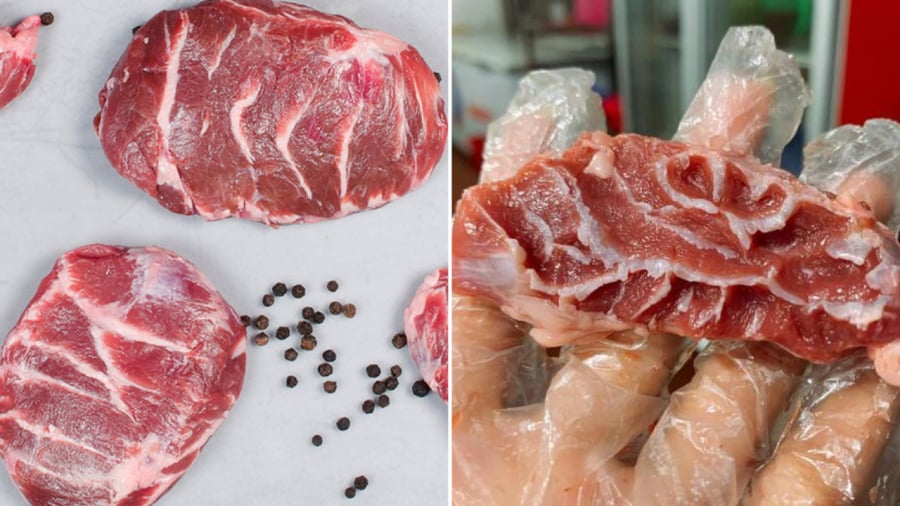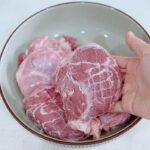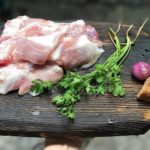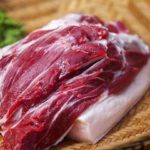Pork cheek, or “má đào” in Vietnamese, is a delicacy not to be missed. This cut of meat is divided into two types: the outer cheek and the inner má đào. The outer cheek tends to have more fat, while the inner má đào boasts a delicate mix of soft tendons, fat, and meat. The tendons in the má đào are thin and tender, never tough or chewy.
Due to its small size and tender texture, má đào is not always easy to come by. Often, one needs to visit the market early in the morning or specially request it from the butcher.
Má đào is a versatile and juicy cut of meat that is easy to cook with. Its mix of fat and tendons ensures it stays moist and never dry or greasy. This cut of pork is not only delicious but also highly nutritious, rich in vitamins B and D, and essential minerals that boost immunity and support healthy bones and teeth. It’s also a great source of collagen, promoting supple and glowing skin.
Tips for Buying Má Đào
As má đào is a limited cut, you may need to visit the market early or place a special order. When purchasing, carefully inspect the meat to ensure its freshness. Choose pieces with a moist yet dry surface, free from any liquid or slime. A piece of meat that appears wet may have been injected with water or previously frozen.
Additionally, pay attention to the color. Opt for meat with a bright, pinkish-red hue, avoiding any pieces with dark spots. Fresh meat should be free from any unpleasant odors and should not be wet. To test its freshness, press your finger into the meat; if it’s resilient and the indentation quickly disappears, it’s fresh.

Cooking with Má Đào
Má đào can be prepared in a variety of ways to suit your taste. Here are some suggestions:
- Boiling: This is the simplest way to cook má đào. Before boiling, blanch the meat in boiling water with ginger and scallions to eliminate any unpleasant odors.
- Stewing and Braising: Má đào can be cooked low and slow to create tender, flavorful dishes.
- Grilling: Marinate the meat in a simple mixture of salt, pepper, garlic, and honey for a delicious grilled treat.
- Stir-frying: Slice the má đào thinly and stir-fry it with vegetables or pickled vegetables for a quick and tasty dish.
Regardless of the cooking method, be mindful of the cooking time to ensure the meat is tender but not dry or tough. Unlike beef, which can be enjoyed rare, pork should always be cooked thoroughly to prevent bacterial infections and parasitic infestations.
When storing pork in the refrigerator, consume it within three days, or freeze it for up to three months. Prolonged storage may result in bacterial growth and a decline in meat quality.
Four Delicious Pork Cuts
- Tenderloin: This lean cut is extremely versatile and can be steamed, boiled, stir-fried, braised, or grilled. It’s a great option for those watching their fat intake.
- Front Shank: The front shank has a darker color but offers a delightful mix of tenderness and crispness. It’s perfect for boiling, stewing, or braising.
- Shoulder: Pork shoulder has a good mix of fat and lean meat, resulting in a moist and flavorful cut. It can be roasted, grilled, fried, or minced for sausages or meatballs.
- Belly: Pork belly has a beautiful mix of fat and lean meat, making it juicy and flavorful. It can be boiled, roasted, braised, grilled, or steamed, with the fat ensuring the meat stays moist without being greasy.
Be sure to grab some má đào the next time you’re at the market, and if you can’t find it, don’t fret! The front shank, belly, shoulder, and tenderloin are all excellent alternatives that will deliver a delicious pork dining experience.






































